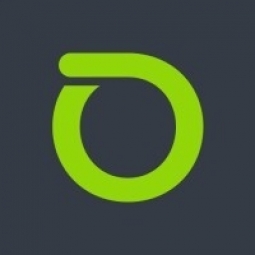Global Home Fashion Retailer Gains Visibility Into Mission Critical Buyer Applications and Distribution Services

Customer Company Size
Large Corporate
Region
- America
- Asia
- Europe
Country
- United States
Product
- nGeniusONE Platform
- InfiniStream Appliances
- nGenius Packet Flow Switches
- OptiViewXG handheld network analysis tablet
Tech Stack
- Network Monitoring
- Application Performance Monitoring
- Wi-Fi Connectivity
Implementation Scale
- Enterprise-wide Deployment
Impact Metrics
- Cost Savings
- Productivity Improvements
- Customer Satisfaction
Technology Category
- Networks & Connectivity - Network Management & Analysis Software
- Application Infrastructure & Middleware - Data Exchange & Integration
Applicable Industries
- Retail
Applicable Functions
- Logistics & Transportation
- Business Operation
Use Cases
- Supply Chain Visibility
- Real-Time Location System (RTLS)
- Remote Asset Management
Services
- System Integration
- Testing & Certification
About The Customer
The customer is a global retailer specializing in discount apparel and home fashion. They offer customers a changing assortment of high-quality merchandise at discounted prices. With nearly four thousand stores spanning nine countries on three continents, generating in excess of $30 billion in annual revenues, this is a globally distributed business. For this home fashion retailer, always-on communication between stores, distribution centers, buying offices, and datacenters, was absolutely crucial for ensuring that the right goods make it to the stores in a timely fashion.
The Challenge
The global retailer was facing challenges with network uptime and ensuring availability of mission critical applications and services. Network congestion issues and lack of bandwidth were interfering with application performance. Whenever a buying office or distribution center was down for more than an hour, millions of dollars were lost. The IT team was tasked with monitoring network uptime and ensuring availability of mission critical applications and services. However, they were essentially flying blind and had to try scattershot approaches to resolving the issues. This necessitated the formation of a war room where finger pointing created delays in resolving the issues along with further consternation.
The Solution
The retailer implemented the nGeniusONE Service Assurance Platform with Adaptive Service Intelligence™ (ASI) technology. The IT team instrumented its datacenters, distribution centers, and buying offices with InfiniStream appliances, the newest software-based InfiniStreamNG™ appliance, and nGenius Packet Flow Switches, so they can monitor network uptime and availability and quickly pinpoint congestion issues between the stores and distribution centers. nGeniusONE dashboards and grid were deployed to investigate issues both reactively and proactively. New dashboards are built ad hoc as problems arise. In addition, an OptiViewXG handheld network analysis tablet was deployed to troubleshoot Wi-Fi connectivity issues at critical board of directors meetings.
Operational Impact
Quantitative Benefit

Case Study missing?
Start adding your own!
Register with your work email and create a new case study profile for your business.
Related Case Studies.

Case Study
Improving Production Line Efficiency with Ethernet Micro RTU Controller
Moxa was asked to provide a connectivity solution for one of the world's leading cosmetics companies. This multinational corporation, with retail presence in 130 countries, 23 global braches, and over 66,000 employees, sought to improve the efficiency of their production process by migrating from manual monitoring to an automatic productivity monitoring system. The production line was being monitored by ABB Real-TPI, a factory information system that offers data collection and analysis to improve plant efficiency. Due to software limitations, the customer needed an OPC server and a corresponding I/O solution to collect data from additional sensor devices for the Real-TPI system. The goal is to enable the factory information system to more thoroughly collect data from every corner of the production line. This will improve its ability to measure Overall Equipment Effectiveness (OEE) and translate into increased production efficiencies. System Requirements • Instant status updates while still consuming minimal bandwidth to relieve strain on limited factory networks • Interoperable with ABB Real-TPI • Small form factor appropriate for deployment where space is scarce • Remote software management and configuration to simplify operations

Case Study
Digital Retail Security Solutions
Sennco wanted to help its retail customers increase sales and profits by developing an innovative alarm system as opposed to conventional connected alarms that are permanently tethered to display products. These traditional security systems were cumbersome and intrusive to the customer shopping experience. Additionally, they provided no useful data or analytics.

Case Study
How Sirqul’s IoT Platform is Crafting Carrefour’s New In-Store Experiences
Carrefour Taiwan’s goal is to be completely digital by end of 2018. Out-dated manual methods for analysis and assumptions limited Carrefour’s ability to change the customer experience and were void of real-time decision-making capabilities. Rather than relying solely on sales data, assumptions, and disparate systems, Carrefour Taiwan’s CEO led an initiative to find a connected IoT solution that could give the team the ability to make real-time changes and more informed decisions. Prior to implementing, Carrefour struggled to address their conversion rates and did not have the proper insights into the customer decision-making process nor how to make an immediate impact without losing customer confidence.

Case Study
Ensures Cold Milk in Your Supermarket
As of 2014, AK-Centralen has over 1,500 Danish supermarkets equipped, and utilizes 16 operators, and is open 24 hours a day, 365 days a year. AK-Centralen needed the ability to monitor the cooling alarms from around the country, 24 hours a day, 365 days a year. Each and every time the door to a milk cooler or a freezer does not close properly, an alarm goes off on a computer screen in a control building in southwestern Odense. This type of alarm will go off approximately 140,000 times per year, equating to roughly 400 alarms in a 24-hour period. Should an alarm go off, then there is only a limited amount of time to act before dairy products or frozen pizza must be disposed of, and this type of waste can quickly start to cost a supermarket a great deal of money.

Case Study
Supermarket Energy Savings
The client had previously deployed a one-meter-per-store monitoring program. Given the manner in which energy consumption changes with external temperature, hour of the day, day of week and month of year, a single meter solution lacked the ability to detect the difference between a true problem and a changing store environment. Most importantly, a single meter solution could never identify root cause of energy consumption changes. This approach never reduced the number of truck-rolls or man-hours required to find and resolve issues.







